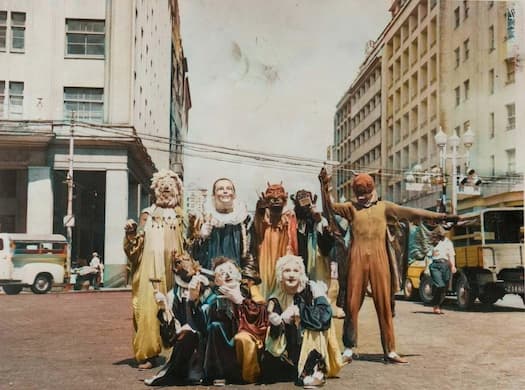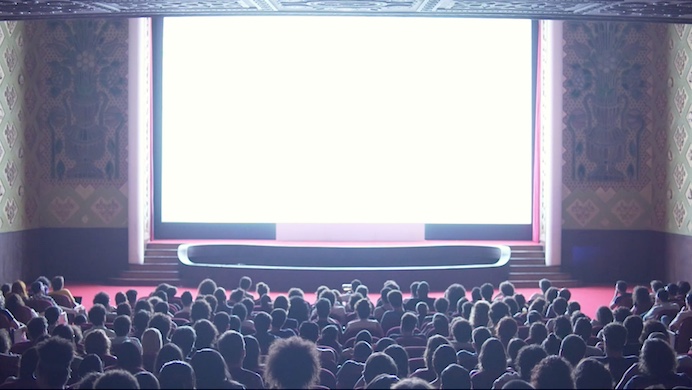‘Pictures of Ghosts’ Searches for the Spirit of the Good Old Days
In the end, there’s little succor to be had in director Kleber Mendonça Filho’s musings, which tend to embrace nostalgia less for its comforts than as a prompt to grumble about how things have gone to hell in a handbasket.

A few days ago in these pages, I had occasion to mention the film critic Serge Daney and his likening of a night out at the cinema to a supernatural experience. The admixture of a darkened theater, illuminated images, and a gathering of like minds, Daney wrote, prompted the arrival of otherworldly creatures. How familiar the Brazilian director Kleber Mendonça Filho is with Daney’s writing, I don’t know, but something of Daney’s spirit is embedded within his new documentary, “Pictures of Ghosts.”
Mr. Filho’s spirit is here as well, of course, but given that he’s still with us, perhaps it’s better to refer to his aching bones. The director apparently is feeling his age. Born in 1968, Mr. Filho has made some splendid films, chief among them “Aquarius” (2016), in which Sônia Braga played a retired journalist who refuses, out of familial loyalty and political principal, to sell her home to a real estate developer. The film’s setting is a down-at-the-heels section of Recife, a sizable city on the northeast coast of Brazil.
This turns out to be Mr. Filho’s hometown, and the centerpiece of “Pictures of Ghosts.” The picture is cobbled together from archival films and photographs culled from a variety of institutions and collections, including the director’s own store of personal artifacts. Much like Ms. Braga’s character in “Aquarius,” Mr. Filho is deeply attached to his home, having inherited it from his mother, the historian Joselice Jucá. A mordant strain of sentiment filters through his first-person narration.
The film begins by detailing the intersection between home, family, and career. Mr. Filho shows us his own wife and kids in situ, as well as how the house has repeatedly been employed as a setting for his films. All the while, he rues the changes in community and culture that have resulted from the ebb-and-flow of social and economic forces. Vintage black-and-white photos of Recife are placed in radical and sometimes jaw-dropping juxtaposition with color photos of the here and now. Mr. Filho uses this tactic repeatedly to underscore the often merciless march of time.

Along with the changes in his family — Mr. Filho’s mother, whose presence looms large within the parameters of his house, died young — he mourns the demise of Recife’s movie theaters. Not all of them have shuttered their doors. The Cinema São Luiz looks to be in fine fettle as an Art Deco revival house, but other movie palaces of yore have been repurposed or left to ruin. Having come of age in these theaters, Mr. Filho can’t help but register their absence. “There are few cities in the world,” he notes, “that still know what [cinema theaters] represent.”
Oddly, “Pictures of Ghosts” doesn’t touch upon the internet and its role in how pictures are distributed and watched. But, then, the film is an odd endeavor, being a rambling and not altogether cohesive meditation prompted by one man’s pining for The Good Old Days.
The “ghost” as metaphor takes on many guises: not just the people and places that nag at our memories, but in fascinating historical tangents that never quite happened. There was, for example, a Nazi attempt to establish an arm of its propaganda machine at Recife. As for, you know, ghosts: there’s that photo of a spirit traveling through Mr. Filho’s living room. It’s blurry, as these things tend to be.
If Daney’s notion of cinema suggests a certain religiosity of effect, Mr. Filho insists on it. Equating the movie theater to a sacred temple is a shopworn analogy, but it is boosted as a consequence of how some of those former movie palaces in Recife have been turned into evangelical houses of worship.
In the end, there’s little succor to be had in Mr. Filho’s musings, which tend to embrace nostalgia less for its comforts than as a prompt to grumble about how things have gone to hell in a handbasket. Viewers of a certain age will commiserate with “Pictures of Ghosts” — I know I did — but there’s something altogether too ready about its conclusions.
Those who aren’t familiar with Mr. Filho’s pictures are recommended to “Aquarius,” which dealt with the same themes in a more bracing and even righteous manner. Truth may be stranger than fiction, but often fiction better embodies the truth.

